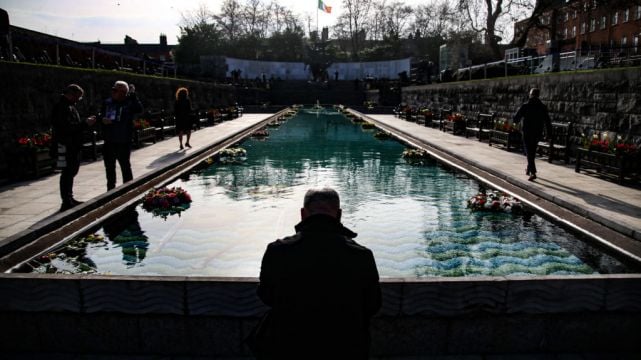Large for-profit operators are the “dominant” providers of nursing home care in Ireland since the Covid-19 pandemic, according to a think-tank’s report.
Research by the Economic and Social Research Institute (ESRI) indicates 14 large private operators now provide approximately 40 per cent of all long-term residential care beds nationally.
Two-thirds of all long-term residential care (LTRC) beds in counties Meath, Monaghan and Laois are now provided by large private operators.
The ESRI said there was a consolidation of private LTRC home operators driven by recent entrants into the Irish market who are mainly financed by international private equity.
These operators opened several large private LTRC homes recently.
Between February 2020 and December 2022, almost one in five of all smaller private long-term residential homes closed, mainly in rural areas, and almost 700 beds were closed in public centres.
Smaller long-term residential care (LTRC) settings are defined as having fewer than 30 beds.
The ESRI and a group representing nursing home providers said the sector was at a “critical juncture” that required Government action to prevent further closures in the sector.
The Irish government has been repeatedly warned by its budgetary watchdog about the need to provide a long-term plan for Ireland’s ageing population; the Irish Fiscal Advisory Council welcomed the establishment of a Future Ireland Fund to address changes to Ireland’s population and climate.
Author of the ESRI report Dr Brendan Walsh said that Ireland was “at an important juncture in establishing a sustainable long-term care system for older people”.
“The Covid-19 pandemic had a terrible impact on LTRC residents and workers. But this period also saw large changes in supply, ownership, and financing, and the LTRC sector faces a number of challenges as it emerges from the pandemic.
“We now have a LTRC system increasingly reliant on a small number of profit-driven operators.
“Policies that harmonise financial incentives for nursing home providers with the primary objective of fulfilling residents’ health and social care demands within a more integrated care environment are required.”
The chief executive of Nursing Homes Ireland, Tadhg Daly, welcomed the ESRI report and agreed that the nursing home sector was at a “critical juncture”.
He said that the ownership of nursing homes was “irrelevant to care” due to oversight by health watchdog Hiqa.
He added: “The Institute notes the ownership of long-term residential care has changed in recent years.
“However, ownership is irrelevant to care as the sector is independently regulated by Hiqa which sets and inspects the standards and quality of care irrespective of owners.
“While there has been significant consolidation and investment into the Irish nursing home sector, this has all but ceased given the dramatic increase in operating costs and failure to address the funding crisis. There will be no new bed capacity provided once the small number that are already under construction and prefunded are completed.”
Mr Daly said: “ESRI rightly calls out too that the Government needs to put in place policies that harmonise financial incentives for nursing home providers with the primary objective of fulfilling residents’ health and social care demands within a more integrated care environment.
“This is consistent with NHI calls over a number of years and the lack of action continues to place a black cloud over the sector, threatening it in an extreme way.
“The ESRI report highlights a reduction of 336 beds from the beginning of the pandemic.
“Hiqa recently reported 60 nursing home closures between 2018 and 2022 which is having an impact on older people and their families throughout Ireland, with people having to travel further to access care and for families to visit residents.
“More nursing home closures are inevitable with the loss of vital community health and social care services unless there is a strong response and substantive immediate intervention in policy and resourcing by the Government as recommended by ESRI in this report.”
The ESRI’s report, Long-term residential care in Ireland: Developments since the onset of the COVID-19, was carried out through a Research Collaborative in Quality and Patient Safety (RCQPS) award examining the changes in the long-term residential care sector since the Covid-19 crisis.
The ESRI research also found that State aid such as the Temporary Assistance Payment Scheme (TAPS) was key to sustaining the sector during the Covid-19 pandemic.
The payment aimed to help nursing homes with the costs of Covid preventative measures and outbreaks.
The financial support was based on the average number of residents in the nursing home, with a maximum payment of €1,800 per resident and an upper limit of €33,000 overall.
The Covid payment was used extensively by private LTRC homes, the ESRI said, with over €132 million provided through the scheme by the end of 2021.
Cleaning/infection control and staffing costs made up the majority of TAPS expenditure.
The use of the TAPS was highest following a Covid-19 outbreak, and the ESRI said there was no evidence that TAPS funding reduced the chances of a Covid-19 outbreak taking place.
The ESRI also concluded that there are still disparities in public and private nursing home costs under the Fair Deal scheme – which sees the State subsidise long-term care.
The ESRI said average prices for a Fair Deal-funded bed in public LTRC homes is 55 per cent higher than in private LTRC homes.
General inflation between 2020 and 2022 significantly outpaced Fair Deal funding increases made to nursing homes.







